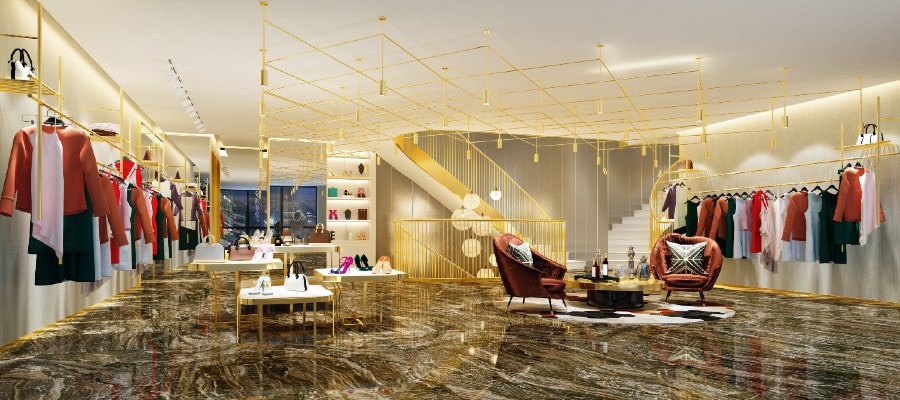Retail & Distribution
Retail Trend: Store Transformation
22 november 2017
Retailing hasn’t just changed with the advent of online commerce. It has been transforming — turning into something new and different. That transformation is still in full swing with regard to retail stores. It’s affecting how stores look, what they have to offer and what people do when they visit them.
In a blog post about optimizing the in-store experience, the National Retail Federation (NRF) said both brick-and-mortar stores and eCommerce sites have their strengths and weaknesses. Online, you can’t touch and feel a fabric or smell a fresh bowl of strawberries. Offline, it’s harder to compare products and prices between limitless brands and choices. “But virtually every retailer knows that this isn’t an ‘either-or’ proposition — no retailer is choosing between online and bricks-and-mortar,” the NRF post said. “In fact, today most successful retailers use technology — whether it’s an app or new point-of-sale system — to augment the overall bricks-and-mortar experience.”
Just how retailers choose to transform their businesses can vary a great deal, yet there is some common ground in terms of best practices. “Transformations must reinvent not only the in-store experience for consumers, but all the components that contribute to this experience, including store mix and format, people, products, infrastructure, IT, and supply chain, to name a few,” according to the Boston Consulting Group (BCG) report, “Staying Ahead of the Customer: Retail Transformation and Reinvention.” To reach goals in the medium term, BCG pointed to four core areas any retail transformation should cover, including:
- store format/footprint
- category strategy
- customer engagement; and
- omnichannel [or unified commerce] strategy
Examples from the Field
Indeed, innovative retailers around the globe are tackling these issues with great energy and promising results. You don’t have to look far to find a store near you embarking on a remodel, shaking up its product assortment and engaging with consumers in completely new and different ways. Take the U.K. retailer John Lewis for instance… Draper’s recently reported about how a new concept store has one-fifth of its space devoted to experiences. Shoppers can arrange to have measurements taken for new carpets and curtains, dine in a rooftop restaurant, be pampered at a nail & brow bar, or take advantage of personal styling services.
Over the summer, Cegid customer ASICS opened their Regent Street flagship store featuring “interactive touch screens, a “robotic shoe delivery system”, motion ID areas to capture posture and running styles so as to advise customers on the best shoes to buy, and even a complimentary juice bar and in-house DJ booth”.
In business for over two centuries, WH Smith has a new store design that tempts passers-by with technology accessories right near the front window. The retailer then lures them in for an experience that showcases classic offerings such as stationery and books carefully curated to complement the newer gadgets. Debenhams is adding Sweat! gyms at several locations. Home sound system maker Sonos’ new London store promises “an ongoing line-up of listening events, screenings, cultural talks” and more, reported The Retail Bulletin.
Makeup artist Charlotte Tilbury’s popular cosmetics line is making waves and selling swiftly at her newest London store, where makeup can be “applied” using augmented reality at a magic mirror. “Core to the offering from a marketing perspective is a strong digital presence anchored by beauty tutorials, an eagerness to experiment with new technologies … and a true sense of experience in the stores themselves,” Forbes wrote.
How Technology Supports Store Transformations
For the retail store to transform into a destination that provides the backdrop for dinner out, a calligraphy class or any number of experiences, it must not only blur the lines between channels but also cater to the customer at a whole new level. This requires a unified commerce solution that supports the many different paths the consumer might take toward his or her purchase. For example, POS technology must enable click-and-collect and ship-from-store. Perhaps the customer is primarily interested in a yoga class today, and doesn’t want to carry her purchases out on her errands afterwards?
Also, running these stores of the future, the retail associates themselves must transform beyond cashiers to become concierges, guides and advisors. When clienteling software offers a centralized, 360-degree view of customer data, associates have the tools and insights they need at their fingertips to offer shoppers a much more personalized encounter. This is all the more important given that retailers need to know their customers across more dimensions and touchpoints. Does she like her online orders left at the back door or on the front porch? What did he buy his wife for their last anniversary? What dessert did they enjoy the last time they visited?
…and, of course, mobility is a must. How else can retailers capture transactions from customers who may be on the move from dining, to shopping, to meeting a guest artist — all in a single store visit? Seamless, frictionless service is the only way.
How would you like to transform your retail stores? Cegid is ready to support your reinvention and renewal. Here are just some of the possible innovations you can add to your store transformation. Contact us today and let’s get started.


